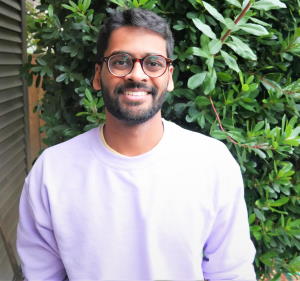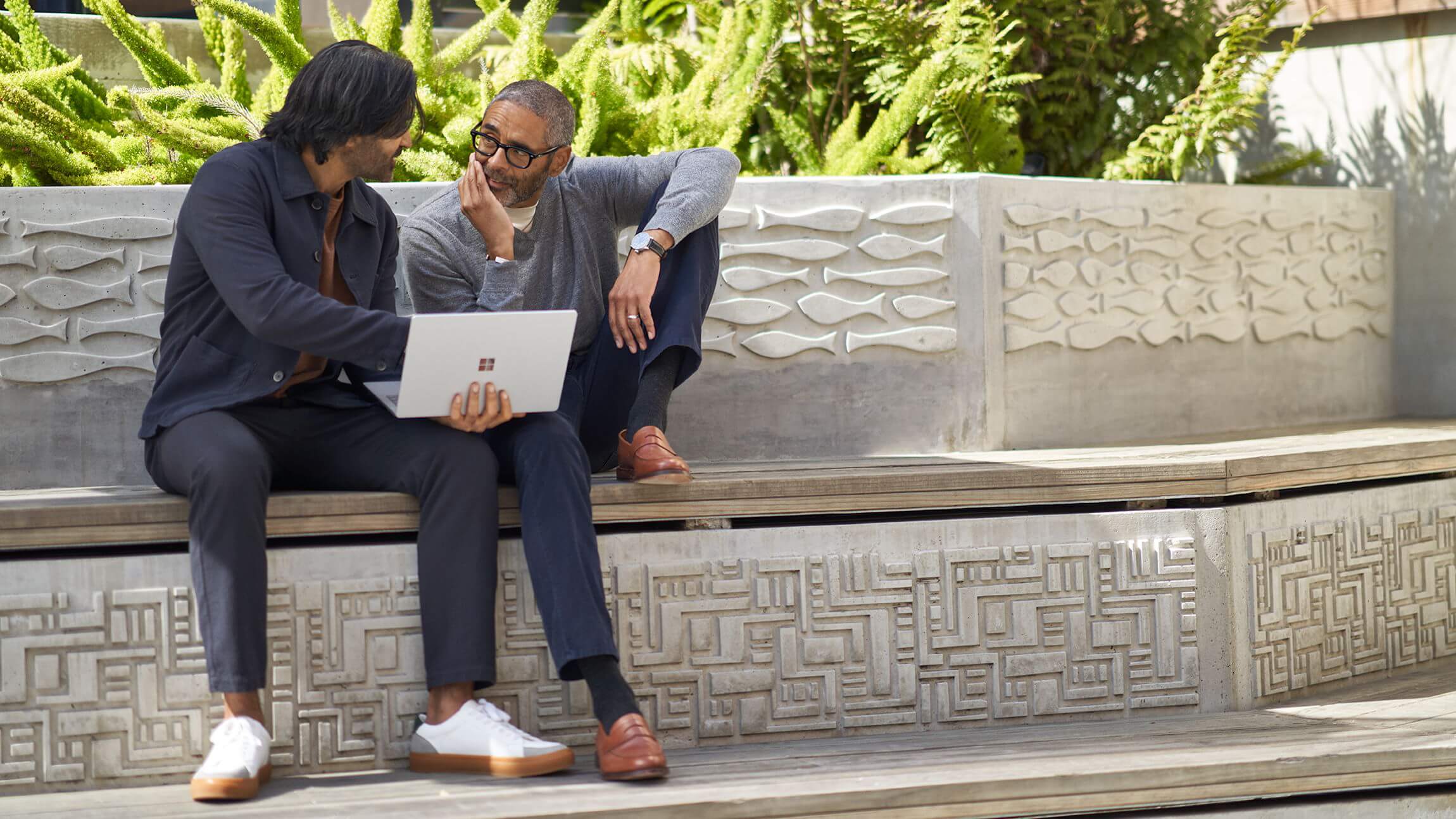 Exciting employee experiences that drive productivity and support hybrid work are possible at Microsoft thanks to a broad network of internet of things (IoT) devices. Whether it be hotdesking, pathfinding, or locating an empty conference room, these experiences benefit productivity, access, system health, and a variety of other services across Microsoft’s smart buildings. But with little to no uniformity between device suppliers, creating these experiences is a challenge. Fortunately, IoT device integration at Microsoft just got a lot easier thanks to Microsoft Digital.
Exciting employee experiences that drive productivity and support hybrid work are possible at Microsoft thanks to a broad network of internet of things (IoT) devices. Whether it be hotdesking, pathfinding, or locating an empty conference room, these experiences benefit productivity, access, system health, and a variety of other services across Microsoft’s smart buildings. But with little to no uniformity between device suppliers, creating these experiences is a challenge. Fortunately, IoT device integration at Microsoft just got a lot easier thanks to Microsoft Digital.
Inside a building you have multiple systems to capture data. We wanted a unified platform, but we also wanted to make sure our experiences are universal.
—Emmanuel Daniel, director of digital transformation and smart buildings, Global Workplace Services
IoT device signals are transformed into services, which light up productivity, wellness, and other solutions for employees and visitors in Microsoft’s smart buildings.
But information from different IoT devices is distinct and lands in several places. No two suppliers expose or integrate information the same way, making it a complex environment to manage and work with.
“Inside a building you have multiple systems to capture data,” says Emmanuel Daniel, a director of digital transformation and smart buildings with Global Workplace Services, the organization responsible for creating world-class experiences across Microsoft’s buildings and spaces. “We wanted a unified platform, but we also wanted to make sure our experiences are universal.”
Replicating IoT-driven experiences across any building in the 110 countries and regions where Microsoft has a presence was a priority.
Thankfully, new seamless architecture gives Microsoft a stable and uniform platform to work from. Designed by Microsoft Digital and Global Workplace Services, the Digital Integration Platform is an abstraction layer that gives Microsoft a simple interface to expose IoT insights in a consistent way.
Supported by Microsoft products like Azure Digital Twins, Azure Maps, IoT Edge, and Time Series Insights, the company’s enterprise-wide IoT integration platform enables services to capture IoT signals in real-time, enabling employee experiences like wayfinding, hotdesking, and occupancy.
[Find out how Microsoft is creating a digital workspace. Learn how Microsoft is reinventing the employee experience.]
How smart buildings create cool experiences
IoT devices help Microsoft connect sensor data to real-world benefits. Each signal is an opportunity to create a digitally transformed workplace.
“My focus has always been to address employee challenges in the most graceful way,” says Sonaly Choudary, a senior program manager with Microsoft Digital’s SmartBuilding Services team. “If an employee needs to find a vacant conference room, we can use a sensor status to recognize that.”
By capturing signals and exposing them as insights, Microsoft Digital can improve productivity. This can manifest as efficiency systems for onsite visitors, such as pathfinding, or intricate system health monitoring that speeds up IoT device management.
The SmartBuilding Services team puts a lot of effort into understanding the specifics of each use case.
But it was also important to recognize and respect how different regions might have different experience requirements.
“Culturally, we’re going to see different expectations depending on which country we’re in,” Daniel says. “We want everyone to have great experiences without feeling like there’s an invasion of their norms.”
In addition to standardizing IoT signals from disparate devices so that Global Workplace Services can replicate services, the Digital Integration Platform allows the team to shape experiences to the needs of any environment.
Once there’s a clear picture of how to create positive impact with an IoT device, Microsoft can render the experience.
“When you know a pain point, you can start building a solution,” Choudary says. “From there, you can start working with suppliers to understand which solutions solve the problem.”
One platform to manage them all
If 40 sensors are used to create 40 different experiences, should you go to 40 different systems? Of course not, you go to one.
But IoT device integration wasn’t always so easy.

“What could happen in the past is that a building might have certain device vendors with their own software and unique ways of exposing data, and a different building would have a completely different set of suppliers,” says Rohun Patel, a program manager on the Microsoft Digital device management team. “Not only does this cause different features across locations, but it also fragments the experiences. You can’t use one company’s hardware with another’s software, so different buildings would have to use different employee apps.”
Some suppliers use APIs, others require Microsoft to ping for the data, while others might push data when a sensor is triggered.
“We’ve created a set of integration patterns that can talk to whatever hardware we’re trying to outfit campuses with and onboard that data into the Digital Integration Platform,” Patel says. “Our patterns can use webhooks, MQTT protocol, consume from EventHubs, or communicate through APIs. That’s how we can power our experiences consistently even when different campuses buy different devices that behave a little differently.”
By making integrations with IoT devices smoother, employee experiences become consistent. Bringing signals into the Digital Integration Platform allows Microsoft Digital and Global Workplace Services to expose insights in a standard way, regardless of the device supplier.
Keeping pace with the future
Construction of a Microsoft smart building can take up to three years, and the lifecycle extends for even longer, so the company has to plan IoT device integration and experiences for the long run.
“We continue to add to our global real estate portfolio and refresh cycles are ongoing,” Shanmugam says. “Users always expect something new, but it takes time and onboarding is critical. There are unknowns.”
At the end of the day, we’re still reliant on suppliers to expose data in a way that we can consume. In many cases, we are working with suppliers that are exposing data at this scale for the first time, which presents a lot of challenges to deliver integrations in a predictable and schedulable way.
—Rohun Patel, program manager, Microsoft Digital
Sometimes it takes several months before an experience becomes a reality, and even then, it carries some uncertainty. Until the IoT device is onboarded and tested, Global Workplace Services and Microsoft Digital have limited time to play around with an experience in the real world.
“Employees will use it because they love it or they’ll leave it alone,” Choudary says.
Even with the Digital Integration Platform, IoT device integration still has its challenges.
“At the end of the day, we’re still reliant on suppliers to expose data in a way that we can consume,” Patel says. “In many cases, we are working with suppliers that are exposing data at this scale for the first time, which presents a lot of challenges to deliver integrations in a predictable and schedulable way.”
And of course, security, governance, privacy, and device health are also top of mind for managing IoT devices.
“We can now be mindful of data privacy issues,” Daniel says. “Users will only trust these services if we are respectful and governed appropriately. Data is centralized in the Digital Integration Platform—it serves as the secure backbone for data extraction.”
Cool experiences start with collaboration
Microsoft’s smart building experiences need to operate at scale, but the Digital Integration Platform allows Microsoft Digital and Global Workplace Services to replicate and fine-tune experiences across the globe.
“The unique challenge has been effectively digitizing the environment,” Daniel says. “Working with Microsoft Digital has allowed us to correlate data to device to space.”
Because of Microsoft’s large and diverse portfolio of global real estate, the two organizations will continue to collaborate on finding improvements.
“We want to work towards automation and make systems self-serve,” Shanmugam says. “An experience in a box, packaged as smart plug and play that just starts working when they’re plugged in.”
Microsoft Digital is currently working on helping the industry build seamless systems that can be shipped anywhere, allowing Microsoft to grow its IoT-driven experiences without complicating IoT device deployments.
“We’re constantly trying to standardize and automate how we onboard,” Patel says. “The gold standard for our message format is adopting the RealEstateCore Digital Twins Definition Language (DTDL) models, which declare what the device is and what data it can supply in Azure Digital Twins. As companies continue to adopt this, their devices will be able to speak the same language as many others and align to a data standard that is quickly growing and being deployed at scale.”
This standardization effort not only helps Microsoft, but IoT adoption at large.
“One of the biggest benefits is the ease at which I can onboard a building to offer services,” Daniel says. “Tenants and users will now get fine-tuned experiences to better collaborate in a way that’s best suited for their needs.”
And as new experiences roll out, Microsoft users will reap the benefits of an awesome experience.
“IoT is valuable because you can provide a consistent experience,” Choudary says. “You can get information as to what’s going on inside a building. It’s a consortium of devices, sensors, integration, people, and information.”

- Before you do anything, you need to understand the users and their needs. This should funnel any decisions you make around IoT-based experiences.
- Once you understand the needs, understand what kind of data you need to power these experiences. This will inform what kind of devices are needed to power services.
- Industry standardization will make integration easier. Until then, having a platform to serve as a broker between devices will allow you to expose insights consistently.
- Not every experience needs to be big or complex; start small and always focus on solving a specific user problem.







